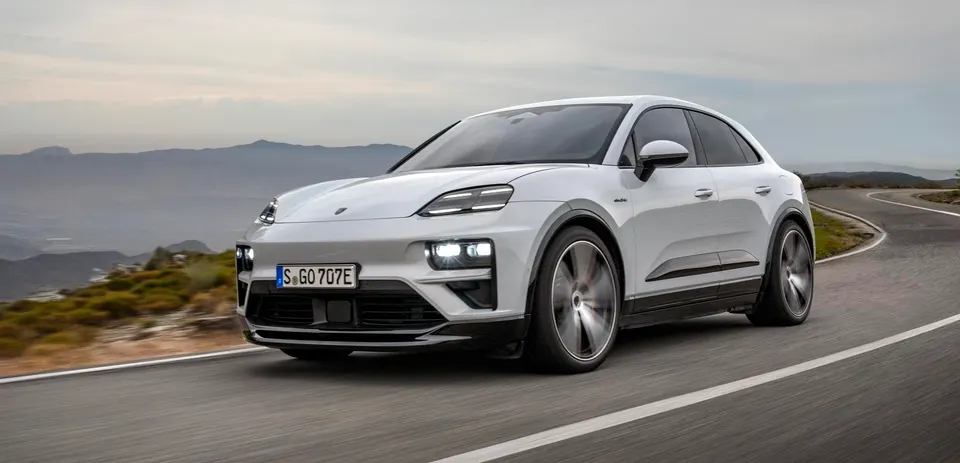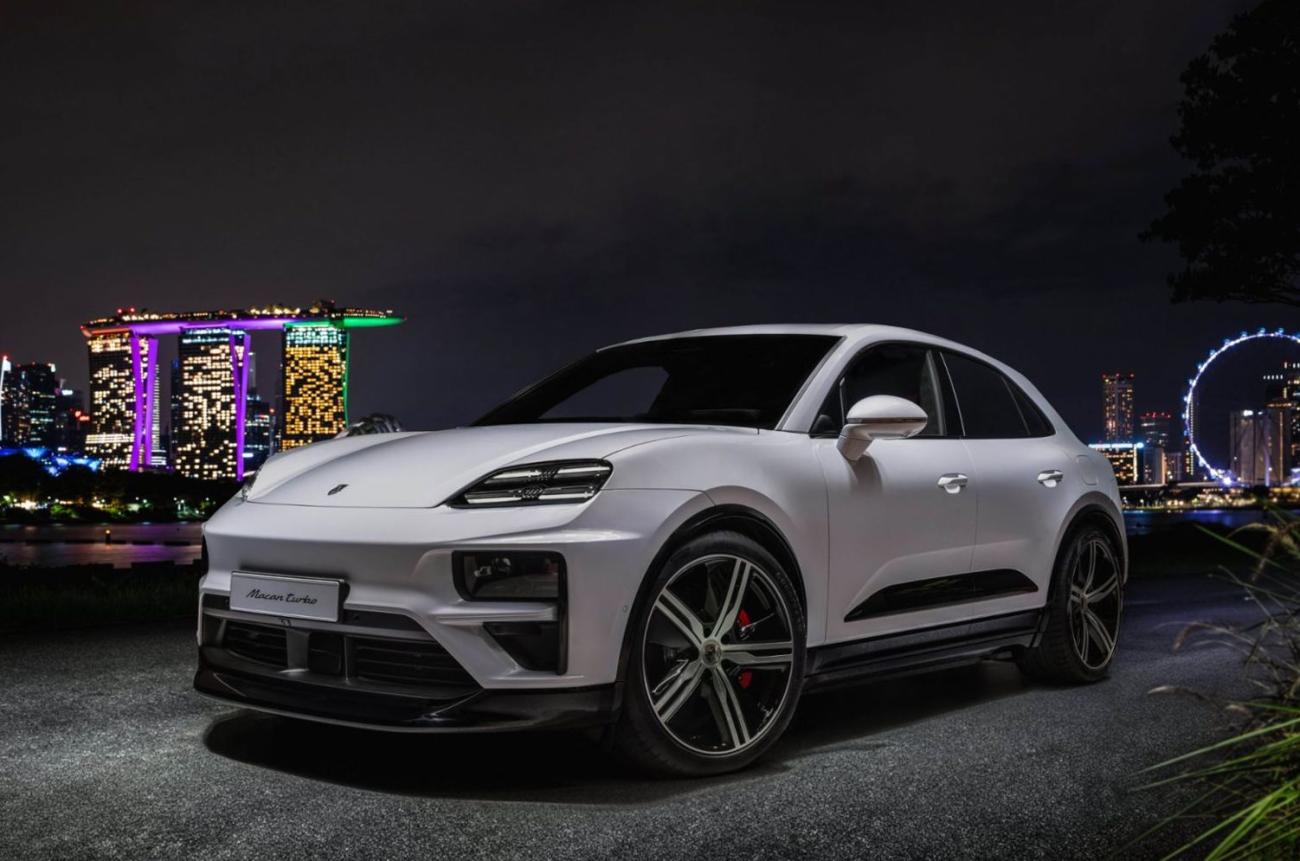Let’s dive into the realm beyond the realm of enthusiasts for a moment, setting aside the allure of naturally aspirated, track-tuned 911s and 718s. What captures the essence of this decade for Porsche is undeniably the debut of the second-generation Macan – an all-new, all-electric addition to the lineup.
Following in the tire tracks of the Taycan, this electric marvel comes in two iterations, adhering to Porsche’s distinctive EV nomenclature: the Macan 4, boasting 402bhp, and the formidable Macan Turbo, flexing its electric muscles with a commanding 630bhp.
Porsche’s ambition is clear – they aim to deliver “the sportiest model in its segment,” and the figures suggest they might just hit the mark.

It’s worth noting that the power figures mentioned are achievable only through “overboost power” during launch control activation.
While the standard driving figures remain undisclosed, the overboost thrust propels the Macan 4 to 62mph in a brisk 5.2 seconds, and the Turbo accomplishes the sprint in a mere 3.3 seconds – a whole second faster than its petrol-powered counterparts. Granted, as electric vehicles, their top speeds might not be 137mph for the 4 and 161mph for the Turbo.
Underpinning this electrifying duo is the Porsche Premium Electric (PPE) platform, a creation of Porsche’s engineering prowess, signaling a new era for the brand. Embracing a 100kWh battery and 800V architecture, essential for upscale EVs, the Macan promises a rapid charge of 10 to 80 percent in just 21 minutes at compatible charging stations.
Both Macan variants feature a dual-motor setup, and surprisingly, opting for the more potent Turbo doesn’t significantly dent the range. Porsche claims a combined WLTP range of 381 miles for the 4 and 367 miles for the Turbo.
To truly earn its stripes as the sportiest electric SUV, the Macan has to deliver on handling. Porsche introduces a host of technological marvels, including the electric Porsche Traction Management (ePTM) and Porsche Torque Vectoring Plus (PTV Plus), ensuring precise torque distribution.
The platform boasts Porsche Active Suspension Management (PASM) with two-valve dampers, offering a spectrum between comfort and performance and optional rear-wheel steer for enhanced maneuverability.
Active aerodynamics in the form of Porsche Active Aerodynamics (PAA) plays a crucial role in enhancing range, featuring an adaptive rear spoiler, active flaps, and flexible covers for a drag coefficient of 0.25.
Externally, the Macan maintains its distinctive identity but adopts a more streamlined, coupe-style silhouette for aerodynamic efficiency.
Inside, a screen-centric cockpit prevails, with a curved 12.9-inch instrument display, a 10.9-inch central screen, and an optional 10.9-inch screen for the front passenger. The EV transformation brings practicality with an 84-litre front cargo area, supplementing the 540-litre boot capacity.
Porsche emphasizes the Macan’s sporting DNA, claiming it delivers a “real sports car feeling.” The electric SUV promises agility, building on the success of its smaller sibling, the Taycan.
While initial market releases will coexist with combustion models, the European market will exclusively embrace the electric Macan due to impending cybersecurity regulations.
The Macan 4 and Turbo are open for orders, with prices starting at £69,800 for the 4 and £95,000 for the Turbo. Anticipate UK deliveries in the latter half of 2024 and brace for the subsequent introduction of faster, more performance-oriented models.
If history repeats itself, as it did with the first Macan that amassed over 800,000 deliveries, this electric evolution could fund the development of more thrilling, manual sports cars – a prospect even the most die-hard Porsche purist can’t argue against.

